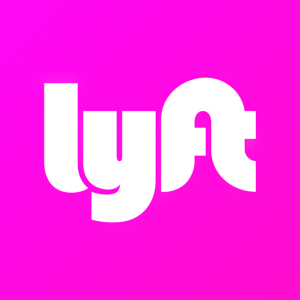Lyft Urges Vaccination Officials to Allow Access for Mobility-Challenged at Drive Through Vaccination Sites
Lyft, Inc. (NASDAQ: LYFT) has called on federal officials to improve accessibility at drive-through vaccination sites for individuals with mobility challenges. Vice President Megan Callahan highlighted that such sites may be inaccessible to high-risk populations, particularly seniors who cannot drive. Lyft estimates over 15 million Americans face transportation barriers to health services. The company suggests establishing dedicated pick-up/drop-off zones, separate lanes for rideshare vehicles, and accommodations for elderly or mobility-impaired patients to enhance access to vaccination sites.
- Lyft is advocating for improved accessibility at vaccination sites, showcasing its commitment to public health.
- The company has extensive experience in transportation logistics, which can be beneficial for vaccine distribution.
- Lyft Healthcare is a major provider of non-emergency medical transportation, potentially increasing its relevance in public health discussions.
- None.
Insights
Analyzing...
Lyft, Inc. (NASDAQ: LYFT) today urged federal officials to ensure that drive through vaccination sites are accessible to people with mobility challenges.
In a letter to the acting administrator of the Centers for Medicare & Medicaid Services, Megan Callahan, Vice President of Lyft Healthcare said, “Without addressing transportation challenges for people who do not drive, drive-through only vaccination sites may not be accessible to many high-risk populations. We are already seeing reports of seniors — unable to drive long distances over long periods of time — facing transportation issues as they attempt to get to mass vaccination sites.”
See full text of letter below and attached.
Elizabeth Richter, Acting Administrator
U.S. Centers for Medicare & Medicaid Services
7500 Security Boulevard
Baltimore, Maryland 21244
January 22, 2021
SUBJECT: Mass vaccination center logistics — Access for vulnerable populations.
Dear Acting Administrator Richter,
President Biden’s plan to accelerate vaccination efforts will hinge on access to vaccination sites for millions of Americans. Many of the distribution events currently being planned make use of public event venues such as sports stadiums to conduct mass vaccination events using a drive-through model. Without addressing transportation challenges for people who do not drive, drive-through only vaccination sites may not be accessible to many high-risk populations. We are already seeing reports of seniors — unable to drive long distances over long periods of time — facing transportation issues as they attempt to get to mass vaccination sites. We expect this to continue as the vaccine is rolled out to the general population.
We estimate that more than 15 million Americans will face transportation barriers to accessing critical health services, including people with physical disabilities, seniors living alone, the uninsured, and low-income working parents. The experience of Transportation Network Companies (TNCs) like Lyft in moving large numbers of people efficiently and cost-effectively to and from large scale events is directly relevant to the logistical challenges public health officials face with vaccine distribution. Lyft is able to operate its rideshare and micro-mobility networks through a pick-up, drop-off model that provides dedicated zones and lanes for accessibility. Lyft Healthcare is also one of the largest providers of non-emergency medical transportation (NEMT) services in the United States, providing access to transportation for up to 37 million eligible Medicaid beneficiaries across 14 states and the District of Columbia. There are three things planners can do to ensure mass vaccination sites are accessible to patients who do not drive or face mobility challenges:
-
Establish a pick-up and drop-off (PUDO) zone, which includes:
- Designated pick-up/drop-off (PUDO) area for patients using taxi, rideshare, or paratransit services
- Designated areas for bikeshare and scooter parking and/or valet services
- Accommodations for elderly patients and mobility-impaired patients with seating, wheelchair accessibility, heating and cooling
- Waiting area to monitor for adverse reactions after the appointment
-
If drive-through only, create a separate lane for taxis, paratransit and rideshare vehicles
- Typically, drive-through vaccination events are designed fo







